Following the release of any product, software, or application, teams can become inundated with customer reviews, which can range from issue reports to feature suggestions. If you are still manually tracking customer issues, customer correspondence may be overlooked, and issues may take a long time to resolve.
All of this new information must be tracked, managed, resolved, and centralized, which is where issue-tracking software comes in. You will find it easier to ensure that customer requests are handled promptly and with proper oversight. In this comprehensive guide, we will look at the best issue tracking software on the market.
Since the first computers were programmed, bugs have been a part of software development. The best way to deal with them is to avoid writing them in the first place. If that fails, it is our responsibility as developers to address them as quickly and effectively as possible.
All bugs should be logged and prioritized in a healthy development workflow. When your task is small, you might be able to get away with it in a simple spreadsheet. However, as things become more complex, the limitations of such an approach will become clear very quickly.
Affiliate Disclosure: Some of the links in this article could be affiliate links, which provide $$$ to me at no cost to you if you decide to purchase the tool.
Importance of Issue Tracking in Project Management
Conducting an orchestra is analogous to project management. To create the desired symphony, every element must perfectly harmonize. Unfortunately, even the best-laid plans can go wrong. This is where issue tracking comes in.
It is the process of monitoring, managing, and resolving issues that arise during the lifecycle of a project. Effective issue tracking ensures that no problem goes unnoticed, allowing teams to stay on track and meet deadlines in everything from software development to marketing campaigns.
💡 Related guide: 13 Best AI Tools for Affiliate Marketing in 2024
Role of Issue-Tracking Software
While spreadsheets and emails have traditionally been the go-to tools for tracking issues, they fall short when it comes to managing large projects. This is where issue tracking software comes into its own. It offers a centralized platform for documenting, prioritizing, and resolving issues.
Issue tracking software, with features designed to streamline workflows and improve collaboration, enables teams to nip problems in the bud and keep projects on track.
We’ve seen the best AI software for photo editing, generating images, marketing, celebrity-voice, sales, and credit repair in recent articles. Let’s take a look at some of the best issue-tracking software available today in this article:
What Are The Best Issue-Tracking Software?
![]()
Following are the Top 13 Best Issue-Tracking Software to Use in 2024:
- HubSpot
- GitHub
- Jira
- Product Board
- Asana
- Aha
- Feedback Loop
- Airtable
- Tara
- Zendesk
- ClickUp
- LiveAgent
- Freshservice
1. HubSpot
Best Overall Issue-Tracker
If you’re looking for the best issue-tracking software to improve your company’s customer service, HubSpot: Issue-Tracking Software is a viable option.
HubSpot Issue Tracking is a customer service issue-tracking application with ticket tracking, customer feedback, and reporting capabilities.

HubSpot’s issue-tracking software is designed for support staff who must keep up with customer demand for support cases.
This software provides monitoring and progress updates to customer tickets by organizing and managing incoming cases.

HubSpot Issue Tracking is one of the best issue tracking software systems for teams seeking to enhance their customer service experience, thanks to its advanced features and integrations with other HubSpot tools.
💡 Key Features of HubSpot:

HubSpot: Issue-Tracking Software distinguishes itself with an array of standout features:
- Omnichannel Support: HubSpot effortlessly manage customer issues from diverse channels including phone, email, live chat, social media, and online forms, fostering a seamless, customer-preferred communication experience.
- App Integrations: The tool seamlessly integrate with other essential tools like Service Hub and your CRM platform, centralizing data and streamlining accessibility.
- Collaboration Features: HubSpot enhance teamwork by assigning ownership, statuses, and collaborating on issues with notes and tags, boosting overall efficiency and communication.
- Automation Features: Leverage automation to streamline issue-tracking, enabling automatic ticket creation, response prioritization, and escalation, freeing your team to focus on customer solutions.
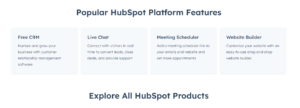
Pros
- ✅ Easy customization and user-friendliness.
- ✅ Scalability and flexibility.
- ✅ Affordable, including a free plan for limited ticket volume.
- ✅ Synergy with other HubSpot tools for enhanced customer service.
Cons
- ❌ Possible absence of advanced features like SLA management, time tracking, or billing.
- ❌ Limited language or currency support.
- ❌ Potential limitations or bugs affecting functionality.
Pricing
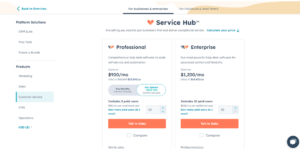
HubSpot: Issue-Tracking Software offers three pricing plans catering to different business sizes and requirements:
- Starter: At $50 per month for 2 users, this plan includes basic features like email ticketing, live chat, meeting scheduling, and more.
- Professional: Priced at $400 per month for 5 users, it encompasses all Starter plan features, plus advanced capabilities such as limited phone support, knowledge base, and more.
- Enterprise: The top-tier plan, priced at $1,200 per month for 10 users, includes all Professional features with the addition of unlimited phone support, knowledge base access, and more advanced functionalities.
You can also take advantage of a 14-day free trial to explore HubSpot: Issue-Tracking Software before committing to a specific plan.
✍ Final Verdict
Finally, HubSpot: Issue-Tracking Software is a powerful and reliable solution for managing and resolving customer issues. It is a compelling choice due to its user-friendliness, insightful analytics, and customer-centric approach.
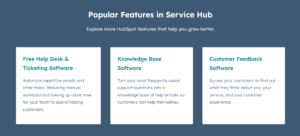
However, prospective users should carefully consider its limitations in terms of customization, budget constraints, and advanced functionality in light of their specific needs. Before making a final decision, compare HubSpot to other available options to ensure the best fit for your business requirements.
HubSpot’s Issue Tracking Software is an excellent fit for small to medium-sized businesses aspiring to deliver exceptional customer service. With a user-friendly interface, comprehensive features, and reasonable pricing, it appeals to businesses aiming for efficient issue management.
HubSpot Issue Tracking is ideal for customer service teams looking for a tool to manage tickets, customer feedback, and reporting.
🔥 Get Started with HubSpot for FREE! 🔥
💡 Related guide: 13 Best AI Email Writer & Generator Tools
2. GitHub
Favorite Issue-Tracker For Developers
![]()
GitHub is a powerful issue-tracking tool that allows teams to manage bugs, issues, and feature requests directly within their code. It is the complete developer platform for building, scaling, and delivering secure software. Whether you’re expanding your business or just getting started, GitHub is the place to keep track of all code changes.
GitHub, which has the world’s largest developer community, will help you create ideas that will liberate people while also keeping track of issues and changes all along.
💡 Key Features
- Labels for issue categorization and organization.
- Milestones for grouping and tracking project phases.
- Assignees to distribute and monitor task responsibilities.
- Comments for communication and collaboration.
- Reactions for expressing opinions on issues and comments.
- References to link related issues, pull requests, etc.
- Notifications for staying updated on issue activity.
Pros
- ✅ Integration with GitHub’s code hosting and collaboration.
- ✅ User-friendly and simple interface.
- ✅ Customizable for various workflows and preferences.
- ✅ Transparent and accessible to collaborators.
Cons
- ❌ Limited scalability for larger or complex projects.
- ❌ Potential security concerns for sensitive projects.
- ❌ Lack of native compatibility with some third-party tools.
Pricing
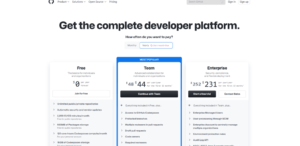
✍ Final Verdict
GitHub is a great choice for developers and project managers alike, with built-in project management features and integrations with other popular tools. With so many new AI project management tools on the market, it can be difficult to pick just one!
For software development teams looking for a comprehensive tool for version control, issue tracking, and project management, as well as access to the largest development community and open-source projects, GitHub is the best ticket-tracking software.
💡 Related guide: 5 Best AI Celebrity Voice Generator: Get Hollywood Stars to Speak for You! (2023)
3. Jira
Best Issue-Tracker For Agile Management
![]()
Jira is a well-known project management tool for software development teams. Jira Software, which is trusted by over 100,000 organizations, comes standard with key features and best practices that agile teams require to develop and evolve their agile practices.
It has features for tracking issues, agile project management, and collaboration. Jira has a variety of features to keep your group organized and productive, from bug tracking to project management and reporting.
💡 Key Features
- Boards: Scrum and Kanban boards for different workflows.
- Timeline: Visual timeline view for planning and tracking.
- Insights: Pre-built reports for measuring and improving performance.
- Integrations: Connects with over 3,000 apps and tools.
Pros
- ✅ Flexible and customizable for various project types.
- ✅ Scalable with free and paid plans for different needs.
- ✅ Powerful and versatile, suitable for diverse tasks.
Cons
- ❌ Complex and steep learning curve for new users.
- ❌ Can be expensive, limited free plan features.
- ❌ Occasional performance issues, reported slow and buggy behavior.
Pricing
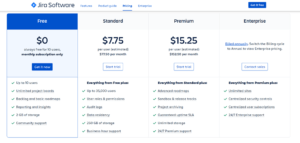
✍ Final Verdict
Jira is an excellent solution for managing software development projects, offering flexibility, scalability, and integration options. Its strengths lie in its adaptable features and broad use cases, making it suitable for various project types. However, potential downsides include a learning curve, cost considerations, and occasional performance issues. Teams should carefully assess their needs and budget before adopting Jira as their project management tool.
Jira is ideal for software development teams looking for a versatile and adaptable tool for agile project management and issue tracking.
💡 Related guide: 13 Best AI Tools for Sales: Boost your revenue overnight! (2023)
4. Product Board
Best Issue-Tracker For High User Satisfaction
![]()
Product Board is a product management platform that includes key features for gathering user feedback, planning roadmaps, tracking issues, and prioritizing projects. Product Board focuses on the customer by assisting product teams in understanding what their customers require, prioritizing what to build next, and aligning everyone around the roadmap, allowing teams to capture and prioritize customer feedback and ideas.
💡 Key Features
- Integrated issue-tracking within the product management system.
- Link issues to features, user stories, and customer insights.
- Import issues from tools like Jira, GitHub, Zendesk.
- Issue dashboard: View and filter issues by various criteria.
- Issue details: Access description, attachments, history, etc.
- Issue workflow: Customize statuses, transitions, and automate actions.
- Issue reports: Generate and export issue-related metrics.
Pros
- ✅ Seamless integration with product management.
- ✅ Prioritizes issues based on customer impact.
- ✅ Supports cross-functional collaboration.
Cons
- ❌ Limited customization options.
- ❌ Lacks advanced features like conditional rules.
- ❌ High price due to being part of a larger system.
Pricing
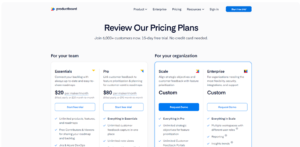
✍ Final Verdict
Productboard’s issue-tracking software is recommended for product teams seeking integrated management of issues aligned with their product strategy. It facilitates collaboration and offers a customer-centric approach. However, teams needing extensive customization, advanced features, or budget-conscious solutions might need to explore alternatives that better suit their requirements.
Product Board is ideal for product managers and teams looking for a tool to collect user feedback and prioritize product features. Teams can make sure that they’ve tracked and settled every issue and achieved the highest level of customer satisfaction by using issue-tracking software such as Project Board.
💡 Related guide: 13 Best AI Tools for Students in 2023
5. Asana
Best Issue-Tracking Software for Beginners
![]()
Asana is a well-known project management tool with features for task management, team collaboration, and project tracking. By automating workflows, streamlining reports, handling intakes, and tracking issues, Asana helps you organize complicated stuff across teams to drive business results.
Asana’s Work Graph data model provides teams with everything they need to stay on track, meet deadlines, and achieve their objectives.
If you are looking for a reliable and user-friendly issue tracking software, consider Asana. It’s a cloud-based project management platform that supports collaboration and efficient work management.
Asana can be used as an issue tracking tool, allowing you to create, assign, prioritize, and track bugs and issues during projects.
💡 Key Features
- Customizable workflows: Different project types can be created, and custom fields can be added to track specific issue details.
- Automation: Automate repetitive tasks using rules, triggers, and actions.
- Integrations: Connect with 200+ apps and tools for seamless work management.
- Reporting: Visualize project progress with dashboards, charts, and exportable data.
- Collaboration: Communicate and collaborate with team members and stakeholders, including comments, attachments, and feedback.
Pros
- ✅ Asana is easy to use with a simple interface accessible from various devices.
- ✅ It’s flexible and scalable, adapting to different team sizes and work styles. Customization options and different views enhance flexibility.
- ✅ The platform promotes collaboration and transparency, aiding alignment and tracking of project history.
Cons
- ❌ Pricing: Asana offers a free plan for up to 15 users, but advanced features require a paid plan starting from $10.99 per user per month.
- ❌ Learning curve: Asana’s numerous features can be overwhelming initially, requiring time and training.
- ❌ Support: Asana lacks phone or live chat support, offering assistance through email and community forums.
Pricing
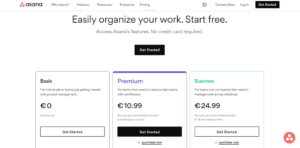
✍ Final Verdict
Asana is a powerful and versatile issue tracking software with extensive features and integrations for productivity and collaboration. However, potential drawbacks include pricing tiers, a learning curve, and limited support options. It’s recommended to explore Asana’s free version before committing to its paid plans.
It is a popular project management tool with many features for teams of all sizes. Because of its simple interface and issue-tracking features, Asana is an excellent choice for teams that want to stay organized and on track.
Asana is the go-to issue-tracking software for teams looking for a versatile and user-friendly tool for task management, team collaboration, and project tracking.
💡 Related guide: Best AI Tools for Business in 2023
6. Aha
Best For Product Strategy and Roadmap Planning
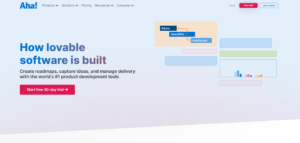
Aha! is a complete product management and issue-tracking tool that enables groups to capture and prioritize ideas, track bugs and issues, and develop product roadmaps. Over 700.000 product builders, including LinkedIn and Dell, trust Aha!.
💡 Key features
- Bidirectional Jira integration: Seamless communication between Aha and Jira for efficient collaboration.
- Customizable field mappings: Flexibility in setting up mappings and links between Aha and Jira records.
- Workflow board: Visualize issues and their statuses on a board, allowing easy tracking and prioritization.
- Real-time reporting: Monitor issue progress through dynamic reports and charts.
Pros
- ✅ Easy to use: It offers a user-friendly interface, templates, and guides for easy issue management.
- ✅ Flexible and scalable: Aha accommodates various workflows and integrations, supporting agile processes.
- ✅ Collaborative and transparent: Aha encourages collaboration, sharing, and keeps stakeholders informed.
Cons
- ❌ Expensive: Aha’s pricing plans, starting at $59 per user per month, may be costly for some users.
- ❌ Complex: The abundance of features might overwhelm users and require a learning curve.
- ❌ Limited support: Aha lacks phone or chat support, offering only email and a web form for inquiries.
Pricing
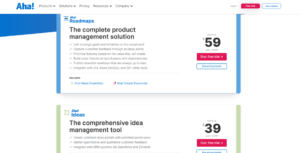
✍ Final Verdict
Aha is a potent issue-tracking software that enhances software quality and supports agile processes with its integrations and features. However, its price, complexity, and limited support may not suit all users. If seeking user-friendly, collaborative software, Aha is worth considering. Yet, those desiring affordability, simplicity, or extensive support should explore alternatives.
Aha! is best fit for product managers and teams looking for a full-featured issue-tracking tool for product strategy, roadmap planning, and idea management. Aha! is an excellent choice for teams looking to stay ahead of the competition, thanks to its powerful issue-tracking features and integrations.
💡 Related guide: 7+ Best AI Copywriting Tools for Beginners in 2023 (Ranked & Reviewed)
7. Feedback Loop
Best Issue-Tracker For Customer Research

Feedback Loop is a customer feedback and issue-tracking tool that enables groups to obtain and prioritize feedback from customers, track and collaborate on issues, and collaborate on solutions.
This management tool also includes reporting and analysis capabilities. Product teams are put in charge of problem recognition and consumer exploration thanks to the agile research platform.
Feedback Loop was created for businesses that just want customer feedback to be a competitive edge rather than a headache. The founders have consolidated a plethora of data and research workflows and capabilities into a single platform for all of your agile research requirements.
💡 Key Features
- Custom and pre-vetted templates for various research types.
- Behavioral and demographic criteria selection for targeting audiences.
- Real-time results and analytics with key metrics.
- Collaboration and integration options with other tools.
Pros
- ✅ User-friendly interface, no coding required.
- ✅ Provides high-quality feedback from verified customers.
- ✅ Enables data-driven decisions for improving customer experience.
Cons
- ❌ Feedback Loop is not a free software, pricing starts at $99/month.
- ❌ It does not have a native mobile app, only accessible through a web browser.
- ❌ It also lacks an integrated issue management system.
Pricing
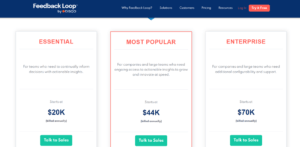
✍ Final Verdict
Feedback Loop is a potent issue-tracking software designed for quick and dependable customer feedback. Suited for businesses wanting to validate ideas and enhance products/services. Best for small to medium-sized businesses with a moderate budget and adaptable research processes. Recommended for its simplicity and effectiveness in obtaining frequent customer feedback.
With its simple interface and powerful features, Feedback Loop is an excellent option for teams who want to enhance customer satisfaction and product quality and are willing to pay the high price.
💡 Related guide: Top 13 Best AI Recruiting Tool for future-proof hiring process (2023)
8. Airtable
Best All-In-One Issue-Tracker
![]()
Airtable is a versatile project management tool that includes database management, task and ticket tracking, and collaboration features.
💡 Key Features
- Cloud-based platform for creating custom applications without coding.
- Combines relational database power with spreadsheet flexibility.
- Free bug tracking template with features like bug priority, pipeline, customizable submission form, Kanban view, and calendar view.
Pros
- ✅ Easy to use and customize without coding.
- ✅ Offers flexibility and scalability for evolving projects.
- ✅ Supports collaboration and integration with various tools and platforms.
Cons
- ❌ Not specialized solely for bug tracking.
- ❌ Lacks some specific bug tracking features like workflows and advanced notifications.
- ❌ Free plan limitations for advanced usage; paid plans required for more resources.
Pricing
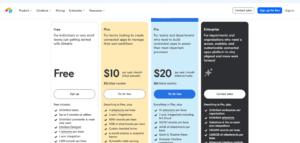
✍ Final Verdict
Airtable presents a user-friendly and adaptable solution for bug management, suitable for teams seeking a simple and collaborative approach. However, it may fall short for those requiring specialized bug tracking features. While it excels in flexibility and customization, teams with more complex needs might need to explore dedicated bug tracking tools.
The tracking software allows you to connect it all and achieve anything. With powerful apps that connect your data, workflows, and teams, you can quickly speed up work and unleash potential. Airtable is used for project management by companies such as Medium, Shopify, and Time.
💡 Related guide: 11 Best AI Marketing Tools to Automate your Business (2023)
9. Tara AI
Best Issue-Tracker Powered by AI
![]()
Tara is an AI-powered project management tool with capabilities for task tracking, collaboration, and project planning. Tara reports directly on the most relevant engineering and performance insights for your team after it has been linked up to Git and PM data. Use the platform to look at performance measures other than commits or lines of code.
💡 Key Features
- Focused dashboard for task and requirement management.
- Bi-directional issue sync with GitHub.
- Simplified sprint planning with recurring sprints.
- Smart indicators for optimizing future sprints.
- Multiple workspaces for comprehensive visibility.
- Remote stand-ups and weekly reporting for insights.
Pros
- ✅ Free for up to 10 users and unlimited projects.
- ✅ Intuitive user interface and seamless navigation.
- ✅ Real-time integration with GitHub and GitLab.
- ✅ Offers actionable insights on engineering performance and impact.
- ✅ Supports cross-functional collaboration among teams.
Cons
- ❌ Limited to GitHub and GitLab, excluding other platforms like Jira or Trello.
- ❌ Lacks advanced features like custom workflows, automation, or notifications.
- ❌ Absence of a mobile app or offline mode.
Pricing
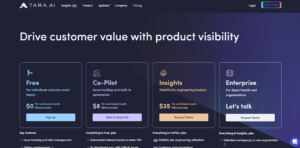
✍ Final Verdict
Tara AI emerges as an excellent issue-tracking software for engineering teams seeking efficient customer-oriented outcomes. With seamless integration and real-time insights, it enhances engineering activity while optimizing performance.
While some limitations exist in terms of platform compatibility and advanced features, Tara AI is a recommended choice for those seeking simplicity, real-time insights, and integrated issue management.
Tara is intended for cross-functional teams of developers, designers, and quality assurance personnel. Tara is best suited for teams looking for a low-cost AI-powered tool for project management, issue and task tracking.
💡 Related guide: Best Credit Repair Software Options: Turbocharge your finances (2023)
10. Zendesk
Top-Rated For Customer Support
![]()
Zendesk is a customer service tool that assists teams with ticket management, customer feedback, and reporting.
Zendesk offers a comprehensive customer service solution that is simple to use and expands with your company.
It provides support anywhere, so customers can reach you at any time. The interaction remains connected regardless of how they choose to communicate (over messaging, live chat, social, email or voice).
💡 Key Features
- Live chat and messaging for real-time support.
- Help center for self-service and information access.
- AI and chatbots for enhanced customer interactions.
- Unified agent workspace for multi-channel handling.
- Collaboration tools for efficient teamwork.
- Ticket routing and automation for streamlined management.
- Knowledge management for empowering customers and agents.
- Analytics and reporting for insights into service operations.
Pros
- ✅ Easy setup and customization.
- ✅ Scalable and flexible plans.
- ✅ Reliable and secure service.
Cons
- ❌ Potential cost for advanced features.
- ❌ Interface complexity for some users.
- ❌ Limited customization and integration options.
Pricing
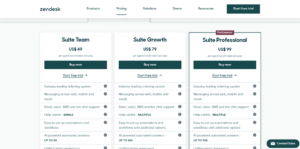
✍ Final Verdict
Zendesk emerges as a top-tier issue-tracking software, offering comprehensive customer service capabilities and analytics. It suits businesses seeking efficient operations and service enhancement. However, potential cost, interface complexity, and limited customization warrant careful consideration. For streamlined customer service operations, businesses should weigh the benefits against their needs and budget before choosing Zendesk.
Zendesk is a comprehensive customer support platform with a variety of features for teams of any size. Big names like Tesco, Uber, and Netflix use the platform. Zendesk is the best issue-tracking software for your team, assisting you with all that you require to enhance your customer service experience, from ticket tracking to collaboration and reporting.
💡 Related guide: Best Transcription Software & Services to convert audio/video to text (2023)
11. ClickUp
Most Customizable Issue-Tracker
![]()
ClickUp is a project management tool with task management, team collaboration, and project tracking capabilities. The app allows you to manage all of your work in one place, including Tasks, Docs, Goals, and more.
With ClickUp 3.0, the group announced the arrival of the next generation of team productivity and collaboration.
It helps you save time by automating your work. With hundreds of automation, you can eliminate the busywork and focus on what matters. Assign tasks, post comments, update statuses, and sync with other tools automatically.
💡 Key Features
- Agile-Scrum Dashboards for high-level workflow monitoring.
- ClickUp Sprints for agile sprint planning and execution.
- Task assignment with due dates, priorities, dependencies, and reminders.
- ClickUp Docs for document creation and sharing.
- ClickUp-GitHub Integration for GitHub repository connection.
Pros
- ✅ User-friendly and customizable interface.
- ✅ All-in-one integration for comprehensive project management.
- ✅ Free plan with storage and task limit.
- ✅ 24/7 support and training availability.
Cons
- ❌ Overwhelming for beginners.
- ❌ Potential expense for larger teams.
- ❌ Bugs and glitches affecting performance.
Pricing
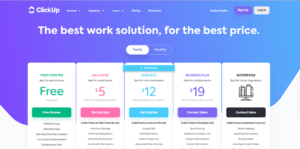
✍ Final Verdict
ClickUp is a comprehensive and flexible software solution suitable for issue tracking and project management. While its robust features and integrations offer numerous advantages, potential complexities and cost considerations should be taken into account.
ClickUp is specifically tailored for teams looking for an affordable, customizable, and feature-rich tool for project management, task tracking, and team collaboration.
12. LiveAgent
Best Omnichannel Helpdesk Tracker
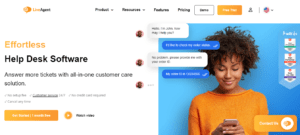
LiveAgent is a customer service tool with ticket monitoring, live chat, and social media integration.
Customers on notable review portals have chosen LiveAgent as the fastest execution software, the best live chat software, and an industry leader.
The star of the show is LiveAgent’s ticketing system, which keeps everything running smoothly. Shifting to ticketing can save you up to 95% more money, time, and resources. Their ticketing system can collect and organize all of your interaction from every single channel you use.
Utilize all key features of the LiveAgent call center software, such as unlimited call recordings, IVR, and agent availability management, to provide excellent customer service on every call.
The issue-tracking software is suitable for customer service teams looking for a platform that combines ticket management, live chat, and social media support. It is designed for groups of all sizes.
💡 Key Features
- Fast Live Chat: LiveAgent’s rapid chat widget increases revenue potential by 48%, with proactive chat invitations.
- Cloud Call Center: Offers remote call management with IVR, unlimited call recordings, routing, and agent availability control.
- Unified Ticketing: Converts all interactions into tickets in one inbox, streamlining with filters, tags, SLAs, and automation.
- Social Media Support: Engages users on platforms like Facebook, Twitter, and more, with message monitoring and response capabilities.
- Self-Service KB: Establishes a customer portal with FAQs, forums, feedback forms, and AI Whisper Assistant for article suggestions.
Pros
- ✅ User-Friendly: Intuitive setup and usage, requiring no technical skills.
- ✅ Flexible Pricing: Offers scalable plans for various budgets and business sizes.
- ✅ Customizable: Allows personalization and integrates with 200+ apps.
- ✅ Excellent Support: Provides 24/7 assistance and extensive resources.
Cons
- ❌ Language Limitations: Supports 43 chat widget languages and 8 agent interface languages, but some translations may be incomplete.
- ❌ No Mobile App: Lacks a dedicated mobile app, requiring mobile browser access.
Pricing
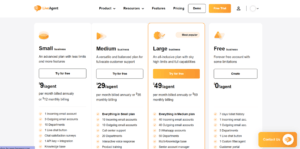
✍ Final Verdict
LiveAgent stands out as a robust issue-tracking software with multi-channel capabilities, efficiency-boosting features, and strong customer satisfaction. Despite language limitations and the absence of a mobile app, LiveAgent’s comprehensive offering makes it an attractive option for businesses seeking effective issue tracking
LiveAgent is an excellent choice for startup companies and groups seeking to enhance their customer support, thanks to its strong issue-tracking features and integrations with other tools.
13. Freshservice
Best Issue-Tracker For Enterprises
![]()
Freshservice is a cloud-based help desk and IT service management tool that aims to improve customer service and IT operations.
The software is an advanced, user-friendly, and cost-effective way to keep your business running smoothly. Its key features include comprehensive issue tracking and ticket management, easily integrated with third-party applications, and an easy-to-use user interface.
Its powerful AI and automation capabilities helps staff to address requests directly within the tools they’re already using.
Freshservice’s automated alert grouping, on-call management, and smart alert management rules will keep your company running smoothly.
💡 Key Features
- Incident management: Track, categorize, automate workflows, and resolve incidents efficiently.
- Service request management: Create self-service portals, service catalogs, and approval workflows.
- Asset management: Real-time view of IT infrastructure, auto-updating CMDB, asset relationships.
- Problem management: Identify root causes of recurring incidents, link to incidents, changes, assets.
- Change management: Plan and implement changes with templates, workflows, approvals, impact analysis.
- Project management: Manage IT projects using agile or waterfall methodologies, AI predictions.
- Reporting and analytics: Insights with reports, dashboards, custom reports, data export.
Pros
- ✅ User-friendly with easy configuration.
- ✅ Modern and intuitive user interface.
- ✅ Powerful AI engine for suggestions and predictions.
- ✅ Robust automation for saving time and resources.
- ✅ Flexible pricing plans.
- ✅ Cloud-based architecture for reliability and scalability.
- ✅ Integrations with popular tools.
- ✅ 24/7 customer support via multiple channels.
Cons
- ❌ Some limitations in customization and advanced features.
- ❌ Compatibility issues with older browsers/devices.
- ❌ Learning curve for users unfamiliar with ITSM concepts.
Pricing
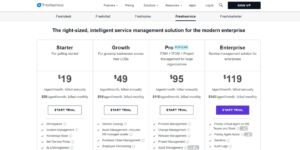
✍ Final Verdict
Freshservice is a modern, user-friendly, and cost-effective issue-tracking software for managing IT issues and requests efficiently. Its comprehensive features, AI capabilities, and strong automation enhance the user experience and service quality. It’s ideal for small to medium-sized businesses seeking a robust ITSM solution. Free trials and demos are available for those interested in trying Freshservice.
Freshservice is suitable for customer service and IT teams looking for a ticketing, asset management, and reporting tool.
Also Read 👇🏻
- Best AI Tools for Students (2023)
- Best AI Recruiting Tools for Future-proof Hiring Process (2023)
- Best AI Tools for Business in September 2023
- Best Credit Repair Software Options: Turbocharge your Finances in 2023
What is the Best Issue-Tracking Software?
![]()
Key features of the best issue-tracking software include team collaboration, ticket management, and customer data management, allowing businesses to provide the best products and customer service possible. For businesses looking to optimize customer support requests, issue-tracking systems are essential tools. These systems equip teams with the tools they need to efficiently manage customer issues, improving customer satisfaction metrics and customer retention for the service/product.
The best issue-tracking software should enable your staff to observe the most common issues identified through feedback from customers and provide personalized workflows. The best issue tracking software would ideally be the same software used for project management, with time-tracking features (almost as good as these AI marketing tools, & AI recruiting tool) and real-time updates when issues are resolved.
We put together a list of various issue-tracking software’s and listed their top features in this comprehensive guide so you can decide which one best suits your team’s needs and your company’s budget.
What is Issue-Tracking Software?
Issue tracking software is essentially a digital command center for managing project challenges. It acts as an archive for issues, bugs, and tasks, giving a clear picture of the project’s status. The days of sifting through a stack of emails are over; with issue tracking software, everything is neatly organized and accessible in one location.
Such tools typically allow you to create an entry for each issue, assign it to a group member, track their progress, and notify stakeholders once the issue has been resolved. Most importantly, issue tracking software allows you to manage all issues in one location, ensuring that nothing falls through the cracks.
Key Features and Benefits
Issue tracking software is more than just a digital to-do list. It has a slew of features that improve project management:
- Centralized Issue Management: Capture, categorize, and assign issues effortlessly.
- Custom Workflows: Tailor processes to match your team’s unique workflow.
- Real-time Collaboration: Facilitate seamless communication among team members.
- Automation: Automate repetitive tasks for increased efficiency.
- Reporting and Analytics: Gain insights into project progress and performance.
- Prioritization: Identify and tackle critical issues before they escalate.
How to use Issue-Tracking Software Systems?
The following steps are typically involved in the use of an issue tracker:
- Reporting an issue: A team member recognizes an issue or problem and enters it into the issue tracking tool by creating a ticket. A complete description of the issue, in addition to any relevant information such as steps to reproduce the issue or error messages, are typically included in the ticket.
- Assigning the issue: The ticket is then appointed to a member of the team or group of team members who are in charge of solving the problem.
- Tracking the issue: The issue tracking system lets you keep record of the status of an issue as it is started working on and settled. This could include the ability to add comments or updates to the ticket, as well as change the ticket’s status to reflect its present state in the resolution process.
- Resolving the issue: Once the issue has been resolved, the ticket in the issue tracking software can be shut and labelled as cleared up.
Software development teams frequently use issue trackers to track and fix defects in software code, however they may also be used by IT team members to monitor and fix technical issues or by customer service departments to track and resolve customer issues.
Issue-Tracking Software Open Source
Developers, testers, managers, and clients can use issue-tracking software to manage and resolve bugs and issues in software projects. By providing features such as: issue-tracking software can assist software development teams in improving their quality, efficiency, and collaboration.
- Creating, assigning, prioritizing, and tracking issues
- Communicating and commenting on issues
- Attaching files and screenshots to issues
- Generating reports and statistics on issues
- Integrating with other tools such as version control, project management, and testing
- Customizing workflows, fields, notifications, and access levels
There are numerous issue-tracking software solutions on the market, but some of them are proprietary and costly.
If you’re looking for a free and open source alternative, you might want to look into the following:
- Redmine: Redmine is a popular issue-tracking software that was created in 2006 using Ruby on Rails. It supports a wide range of projects, roles, users, and languages. It also has a robust plugin ecosystem that allows it to expand its features.
- Bugzilla: Another popular issue-tracking software with a long history is Bugzilla. Mozilla created it in 1998 and it is still used by many organizations today.
- Trac: Trac describes itself as taking a simplified approach to web-based software project management, but this should not be confused with a lack of features.
These are just a few examples of open source issue-tracking software that you can use in your software development projects. There are numerous other options available online that you can investigate and compare. The best issue-tracking software for you is determined by your requirements, preferences, budget, and technical abilities.
How Issue-Tracking Software Enhances Project Efficiency?
Consider the following scenario: A software development team is hard at work on a critical release. A critical bug is discovered all of a sudden. This could devolve into chaos if issue tracking software is not used. With the right tool, however, the bug is quickly logged, assigned to a developer, and its progress tracked until it is resolved. This effective process ensures that the project stays on track and produces high-quality results.
Criteria for Selecting the Best Issue-Tracking Software
![]()
Choosing the best issue tracking software requires careful consideration of various factors. Let’s explore these criteria in detail.
Ease of Use
- The software should be user-friendly and intuitive.
- Customizability: Ability to adapt the software to your needs (custom fields, workflows, labels, etc.).
- Minimize learning curve for issue creation, updating, and tracking.
Collaboration and Communication Tools
- Enable efficient collaboration among team members and stakeholders.
- Communication: Platform for sharing files, assigning tasks, and receiving issue status notifications.
- Integration: Ability to connect with other tools like email, chat, and project management systems.
Reporting and Analytics
- Access to insightful reports and analytics on project performance.
- Metrics: Issue trends, resolution time, team productivity, customer satisfaction, etc.
- Export and Share: Capability to export and share reports in various formats.
Security
- Ensure data security and privacy through encryption, authentication, authorization, backup, and recovery mechanisms.
- User Access Control: Manage access and permissions for different roles (admins, managers, developers, testers, customers, etc.).
Scalability for Growing Projects
- Software should accommodate project growth and complexity.
- Support for multiple projects, teams, locations, languages, platforms, and devices.
- Flexibility: Option to upgrade or downgrade as per changing needs and budget.
Considering Specific Requirements
- Tailor your choice based on your project’s unique goals and needs.
- Evaluate how each software aligns with your specific requirements.
Comparison and Evaluation
- Compare different issue-tracking software options.
- Consider features, reviews, ratings, pricing, and more.
- Thoroughly assess the pros and cons of each option.
Choosing the best issue-tracking software entails evaluating various criteria to ensure it meets the requirements and goals of your project. This systematic approach will assist you in making an informed decision and locating the best solution for your project.
Issue-Tracking Software Free
![]()
Issue-tracking software can be extremely beneficial to software development teams, but it can also be quite costly. Some issue-tracking software may charge a monthly or annual fee per user, which can quickly add up if your team is huge or growing.
Luckily, some issue-tracking software is free to use, either for a limited number of users or projects, or with some restrictions or limitations.
Some free issue-tracking software examples include:
- Jira: Jira is a well-known and powerful issue-tracking software on the market. It provides numerous features and integrations for agile development teams. Jira offers a free plan that allows for up to ten users and ten projects.
- Bugzilla: Bugzilla has been around for over 20 years and is an open-source issue-tracking software. It is intended for bug tracking and quality assurance, but it can be used for other issues as well. Bugzilla is available for free download and installation on your own server.
- MantisBT: Another open-source issue-tracking software that is simple to use and customize is MantisBT. It supports a large number of projects, users, roles, and workflows. MantisBT is also available for free download and installation on your own server.
How to Implement Issue-Tracking Software Successfully
![]()
Implementing issue tracking software requires a well-defined strategy. Let’s break down the process into actionable steps.
Defining Goals and Requirements
- Identify Pain Points: Recognize challenges your team faces in issue management.
- Define Goals: Set objectives like improved issue resolution, enhanced customer satisfaction, or cost reduction.
- List Requirements: Outline criteria for evaluating software options (usability, scalability, security, etc.).
Researching and Selecting Software
- Source Information: Gather insights from reviews, testimonials, case studies, demos, and free trials.
- Expert Recommendations: Seek advice from peers and industry experts.
- Consider Factors: Assess functionality, usability, reliability, performance, compatibility, and cost.
- Vendor Reputation: Evaluate vendor credibility and customer support.
Preparing Team and Data
- Communicate Benefits: Inform the team about software advantages and expectations.
- Team Training: Provide effective training to ensure proficient software usage.
- Define Roles: Assign responsibilities for implementation and ongoing management.
- Data Migration: Organize, clean, backup, and secure data for migration.
Implementing According to Best Practices
- Follow Guidelines: Adhere to vendor instructions for installation and configuration.
- Thorough Testing: Ensure software compatibility and functionality through comprehensive testing.
- Data Migration: Migrate and verify data accuracy and completeness.
- Troubleshooting: Monitor and resolve issues that arise during implementation.
- Documentation: Maintain detailed documentation of the implementation process.
Evaluating and Optimizing Performance
- Measure Impact: Analyze the software’s effect on work quality, efficiency, and customer satisfaction.
- Gather Feedback: Collect input from team members and customers to identify areas for improvement.
- Continuous Improvement: Update and upgrade software to address evolving needs.
- Support: Seek ongoing support from the vendor or other sources.
A well-structured approach is required for successfully implementing issue-tracking software. Organizations can effectively leverage the benefits of this software by defining goals, researching options, preparing the team and data, adhering to best practices, and continuously optimizing performance.
User-friendly Issue-Tracking Software for Beginners
A type of software that assists users in managing and resolving issues or bugs in their projects is user-friendly issue tracking software for beginners. Issue tracking software can improve the project team’s quality, efficiency, and productivity by including features such as:
Creating and Managing Issues
- Allows for easy creation, assignment, and prioritization of issues.
- Simplifies issue tracking, ensuring nothing falls through the cracks.
Status Tracking and Progress
- Provides real-time tracking of issue status and progress.
- Helps teams stay on top of tasks and deadlines.
Team Collaboration
- Facilitates seamless communication and collaboration among team members and stakeholders.
- Enhances overall project coordination.
Reporting and Analytics
- Offers robust reporting and analytics capabilities for issue resolution.
- Enables data-driven decision-making.
Qualities of User-Friendly Software
- Simple and Intuitive Interfaces: Ideal for beginners with straightforward navigation.
- Comprehensive Documentation: Clear guides and tutorials for easy setup and use.
- Customization: Flexible workflows and settings to adapt to project needs.
- Responsive Customer Support: Access to helpful support for assistance.
Top User-Friendly Issue Tracking Software
1. Jira
- Widely used and powerful software for teams of all sizes.
- Features various templates and project types.
- Intuitive drag-and-drop interface for effortless issue management.
- Robust filters and dashboards for effective issue monitoring.
- Seamless integration with tools like GitHub, Slack, and Microsoft Teams.
- Offers a free plan for up to 10 users and a 7-day premium plan trial.
2. Zoho BugTracker
- Simple and affordable software for faster bug fixing and collaboration.
- Streamlined workflow for quick issue creation, assignment, and resolution.
- Visual kanban boards for tracking issue status and priority.
- Built-in chat and forum for communication with team members and clients.
- Comprehensive reporting system for performance and quality monitoring.
- Provides a free plan for up to 3 users and 2 projects, along with a 15-day trial for paid plans.
For beginners managing projects efficiently, user-friendly issue tracking software is essential. Consider Jira and Zoho BugTracker as two excellent options for improving project outcomes and streamlining issue management. Visit the websites of these software providers for more information and reviews.
Affordable Issue-Tracking Solutions for Startups
Issue tracking is critical for software development projects because it allows for the detection and resolution of bugs and errors. Finding the best issue tracking software is critical, particularly for startups.
Here’s a list of the best affordable, user-friendly, and flexible issue-tracking solutions for startups.
Top Issue-Tracking Software for Startups
1. Jira
- Versatile Solution: Jira is a widely used and comprehensive issue tracking solution suitable for various project types, from agile to waterfall.
- Customization: Users can create custom workflows, dashboards, reports, and notifications to tailor Jira to their specific needs.
- Scalable Cloud Version: Jira offers a secure and scalable cloud-based version.
- Affordable: Pricing starts from $10 per month for up to 10 users.
2. Asana
- Collaborative Focus: Asana emphasizes collaboration and communication, offering a simple and intuitive platform.
- Task Management: Users can create tasks, assign them, add comments, attachments, and deadlines, and track progress in real-time.
- Integration: Integrates seamlessly with various tools and services, including GitHub, Slack, Google Drive, and Zapier.
- Pricing: Starts from $10.99 per user per month.
3. Trello
- Visual and Fun: Trello uses boards, lists, and cards for project organization and management, making it a visually engaging solution.
- Drag-and-Drop: Users can easily drag and drop cards to indicate status, add labels, checklists, due dates, attachments, and comments.
- Power-Ups: Offers a variety of power-ups to extend functionality and integrations with other apps and platforms.
- Pricing: Starts from $9.99 per user per month.
4. GitHub
- Built into GitHub: GitHub Issues is integrated into GitHub, the leading code hosting and collaboration platform.
- Effective Issue Tracking: Users can create, assign, label, and link issues to pull requests and commits.
- Search and Filter: Features a powerful search and filter tool for efficient issue sorting and retrieval.
- Pricing: Free for public repositories, starting from $4 per user per month for private repositories.
5. Bugsnag
- Smart and Automated: Bugsnag detects and diagnoses errors across web, mobile, and desktop applications in real-time.
- Detailed Error Reports: Provides comprehensive error reports, including stack traces, device info, user feedback, and more.
- Prioritization: Prioritizes errors based on severity and impact, sending alerts via email, Slack, PagerDuty, etc.
- Pricing: Starts from $29 per month for up to 10k errors
Best Issue-Tracking Software for Bug Tracking
Bug tracking is essential for software developers in order to identify and resolve issues while maintaining software quality, security, and customer satisfaction. To make this process go more smoothly, you’ll need the best bug tracking software.
Importance of Issue Tracking Software
- Bug Management: Issue tracking software helps manage and resolve bugs, errors, and issues in software projects.
- Functionality: It enables the creation, assignment, prioritization, monitoring, and closure of bug reports.
- Collaboration: Facilitates team collaboration, customer communication, and integration with other tools.
Choosing the Right Software
- With various options available, choosing the best issue tracking software requires consideration of features, pricing, and reviews.
- This article lists some of the best issue tracking software for bug tracking in 2023.
Top Issue-Tracking Software for Bug Tracking
1. ClickUp
- Customizable Platform: ClickUp is a versatile productivity platform with a dedicated bug tracking feature.
- Bug Reporting: Users can create bug reports, assign them, and add comments, attachments, and more.
- Integration: Integrates seamlessly with GitHub, Bitbucket, GitLab, and offers agile project management features.
- Customizability: Known for its high customizability.
2. Kualitee
- Cloud-Based Solution: Kualitee is a cloud-based bug tracking software emphasizing high-quality software delivery.
- Testing and Bug Tracking: Offers test case creation, execution, bug reporting, and progress tracking.
- Collaboration: Facilitates team collaboration through chat, email notifications, and feedback tools.
- Integration: Integrates with Jira, Jenkins, Selenium, Bitbucket, among others.
- Ease of Use: Noted for its user-friendly interface.
3. New Relic
- Observability Platform: New Relic is a comprehensive observability platform for software monitoring and optimization.
- Bug Identification: Collects data to identify and troubleshoot bugs, errors, performance issues, and anomalies.
- Data Visualization: Allows users to create alerts, dashboards, charts, and reports for data visualization and sharing.
- Integration: Integrates with GitHub, Slack, PagerDuty, AWS Lambda, and other tools.
- Complete Observability: Stands out for offering bug tracking within a complete observability platform.
Additional Options
Other popular issue tracking software options include Backlog, Katalon , QACoverage, BugHerd, LogRocket, and Jira.
You can compare these tools based on features, pricing, reviews, integrations, and support.
Choosing the best bug tracking software is critical for improving software quality, customer satisfaction, and efficiency. It streamlines bug tracking processes, saving time, money, and resources in the long run. Choose the software that aligns with your specific needs and start effectively addressing those bugs! 🐞
Mobile App Compatible Issue-Tracking Tools
Issue tracking tools that are mobile app compatible are essential for DevOps developers and customers who want to manage and monitor issues on the go. In this article, we will look at the advantages of using these tools as well as some of the best issue tracking software with mobile app compatibility in 2023.
Benefits of Mobile App Compatible Issue Tracking Tools
- Convenience: Access and update issues anytime, anywhere using mobile devices, leveraging device features like cameras and GPS.
- Collaboration: Effective team communication through chat, voice, or video calls, along with push notifications for updates and deadlines.
- Productivity: Streamline workflows by integrating with other mobile apps such as email, calendar, and cloud storage.
Top Mobile App Compatible Issue Tracking Tools in 2023
1. ClickUp
- Versatile Platform: ClickUp offers project, task, and issue management in one place.
- Native Mobile App: Available for both iOS and Android devices.
- Features: Create, edit, assign, comment, and complete issues on mobile.
- Integration: Seamless integration with tools like GitHub.
2. Backlog
- Intuitive Tool: Backlog simplifies bug and issue tracking.
- Native Mobile App: Supports iOS and Android.
- Capabilities: View, create, update, and comment on issues via mobile.
- Integration: Integrates with tools like Slack.
3. SysAid
- Comprehensive IT Service Management: SysAid focuses on customer service and support.
- Mobile App: Available for both iOS and Android devices.
- Functionality: Access and update issues, scan barcodes, record voice notes, and more.
- Integration: Compatible with tools like Salesforce.
4. Freshservice
- Cloud-Based IT Service Management: Freshservice streamlines IT processes.
- Mobile App: Supports both iOS and Android.
- Features: Access and update issues, scan QR codes, chat, and more.
- Integration: Integrates with tools like Jira.
5. Zendesk
- Customer Service Tool: Zendesk enhances customer experiences.
- Mobile App: Available for both iOS and Android.
- Capabilities: Access and update issues, view analytics, and communicate with team members and customers.
- Communication: Make phone calls and send SMS messages through the app.
Tips for Optimizing Your Workflow Using Issue-Tracking Software
![]()
Issue-tracking software is a powerful ally in optimizing project workflows. Let’s explore how to make the most of it.
1. Define Clear and Consistent Rules
- Establish rules and guidelines for issue-related tasks.
- Ensure uniformity in standards and expectations to prevent confusion.
2. Integrate with Other Tools
- Integrate issue-tracking software with tools like email, chat, calendar, code, and testing platforms.
- Streamline processes and avoid switching between different applications.
3. Customize Software Settings
- Tailor issue tracking software settings to match specific needs.
- Create custom fields, labels, filters, templates, and workflows.
Harnessing the Power of Issue-Tracking Software
- Issue-tracking software enhances issue management and resolution efficiency.
- Following the provided tips can help optimize workflows and yield better results.
You can improve your team’s productivity and issue management processes by using issue tracking software effectively and implementing the suggested strategies.
Future Trends in Issue-Tracking Software
![]()
The world of issue tracking software is evolving. Stay ahead of the curve with these future trends.
1. AI & ML Integrations
- AI and ML automate repetitive tasks like issue categorization and resolution.
- Smart suggestions for solutions, resource allocation, effort estimation, and risk prediction.
- Data analysis for identifying patterns, trends, anomalies, and root causes of issues.
- Enhances accuracy, efficiency, and productivity, freeing teams for creative tasks.
2. Omnichannel Support
- Providing consistent customer service across various channels (phone, email, chat, social media, web forms).
- Integration with platforms customers use to report issues.
- Unified view of customer interactions for improved satisfaction and loyalty.
3. Cloud-Based Solutions
- Cloud-based options offer scalability, flexibility, accessibility, security, and cost-effectiveness.
- Enables remote access and collaboration across different locations and time zones.
- Reduces hardware maintenance and software update burdens.
4. User-Centric Design
- Focuses on end-users’ needs, preferences, and expectations.
- Enhances usability, functionality, and aesthetics.
- Provides a simple, intuitive interface and customizable experiences.
- Increases engagement, satisfaction, and adoption.
5. Data-Driven Insights
- Derives actionable information from data analysis.
- Offers guidance and recommendations based on collected data.
- Measures and improves performance and impact with metrics.
- Optimizes processes, strategies, and outcomes.
The changing landscape of software development necessitates the adaptation of issue tracking software. AI/ML integration, omnichannel support, cloud-based solutions, user-centric design, and data-driven insights are all expected to change the way teams manage and resolve issues. Issue tracking software that embraces these trends can effectively cater to the changing needs of software development teams.
Wrap-up
As previously stated, issue-tracking systems typically provide far more than “simple” assistance with managing incoming issues and tickets. Some of them, such as GitHub and SolarWinds, were created by IT professionals for IT professionals and focus more on those features, whereas other software, such as Zendesk and LiveAgent, focuses primarily on customer support and eventual ticket tracking. In the end, you must decide which issue-tracking software is best for your team.
![]()
Choosing the best issue tracking software is necessary to assess your team’s specific needs, project requirements, and preferred workflow before purchasing tracking software. You can efficiently manage bugs, streamline project management, and improve collaboration across your development teams with the right tool.
Whether you’re a startup, a growing business, or an established enterprise, the right issue tracking software is a valuable asset that contributes to project success.
AI tools for business are driving technological innovation, improving operations, and enabling smarter decision-making. They drive efficiency and competitiveness, shaping the future of success, with everything from chatbots for customer support to data analysis with natural language processing.
Remember that the software market is dynamic, and new solutions are frequently introduced. Keep up with the latest trends and tools to ensure your development processes remain optimized and effective.
FAQ’s
Q. What is the best issue tracking software for small businesses?
Issue Tracking Software Options for Small Businesses:
HubSpot Issue Tracking Software
- Cloud-based with omnichannel support
- Integrates with CRM and other tools
- Starts at $19 per agent per month
- Online project management and issue tracking
- Offers timelines, goals, chat, automation, reporting
- Free plan for unlimited users; paid plans from $5 per user per month
- Help desk and issue tracking software
- Supports multiple channels
- Offers automation, collaboration, knowledge base, reporting
- Starts at $15 per agent per month

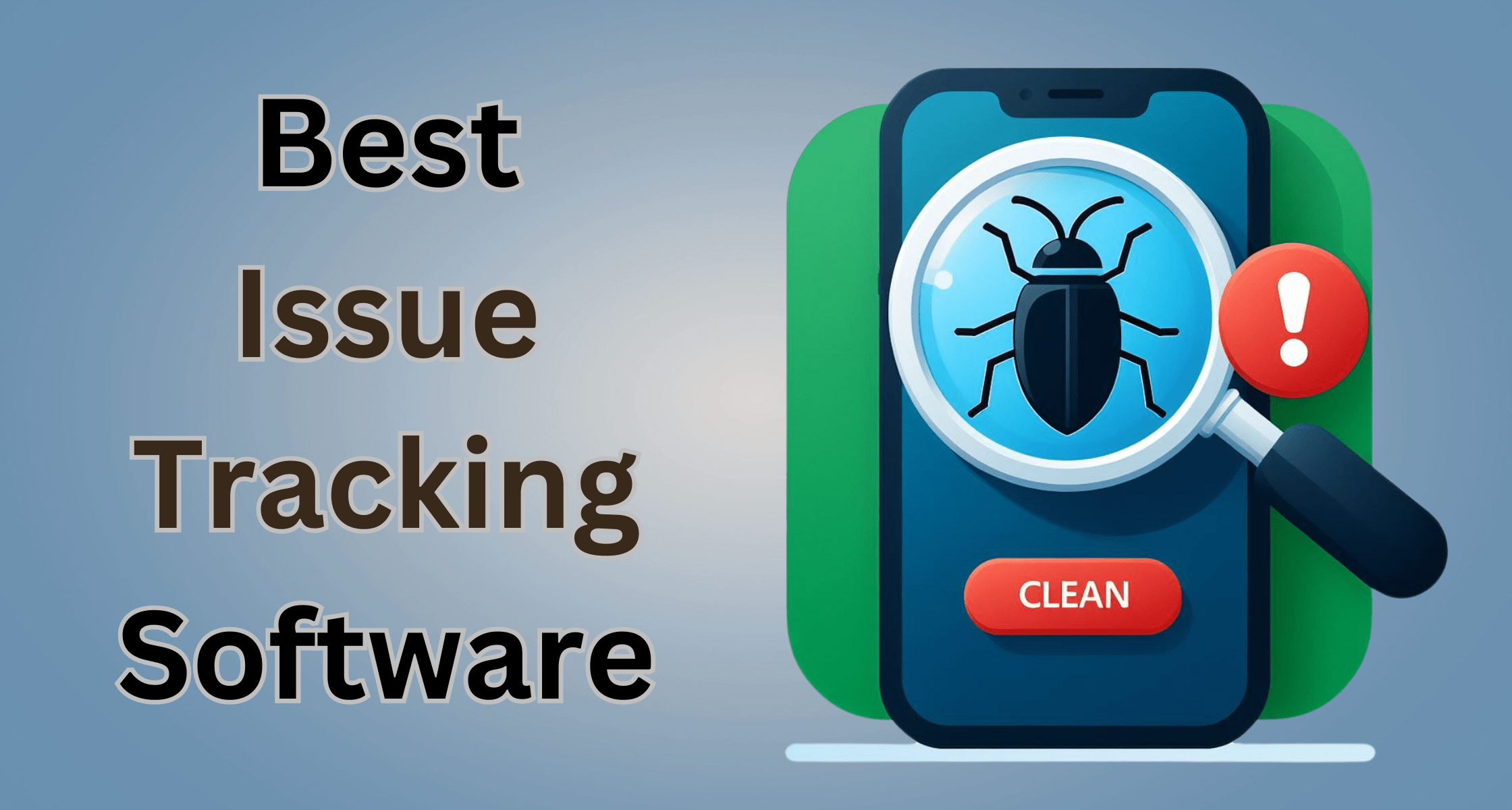




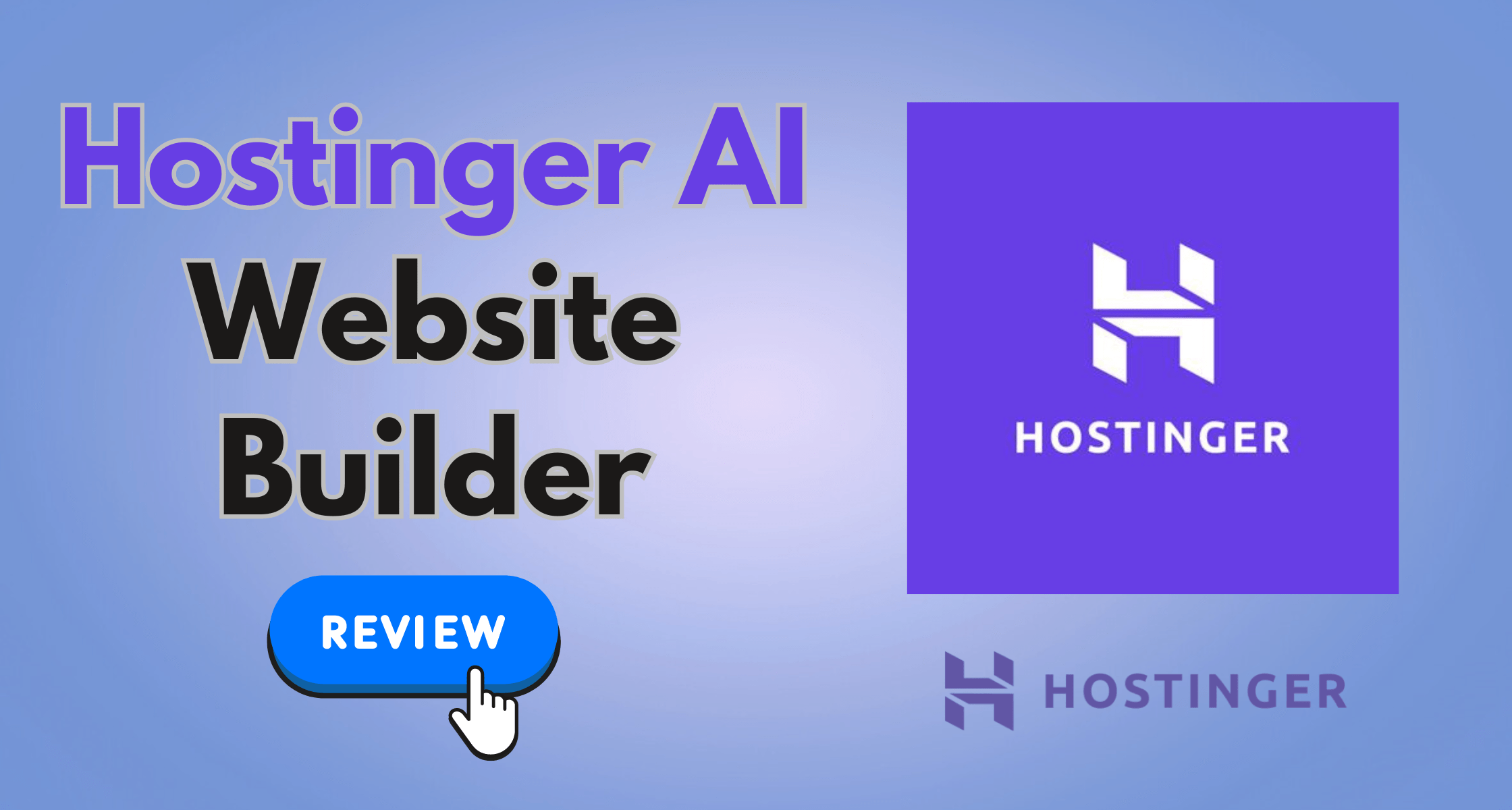

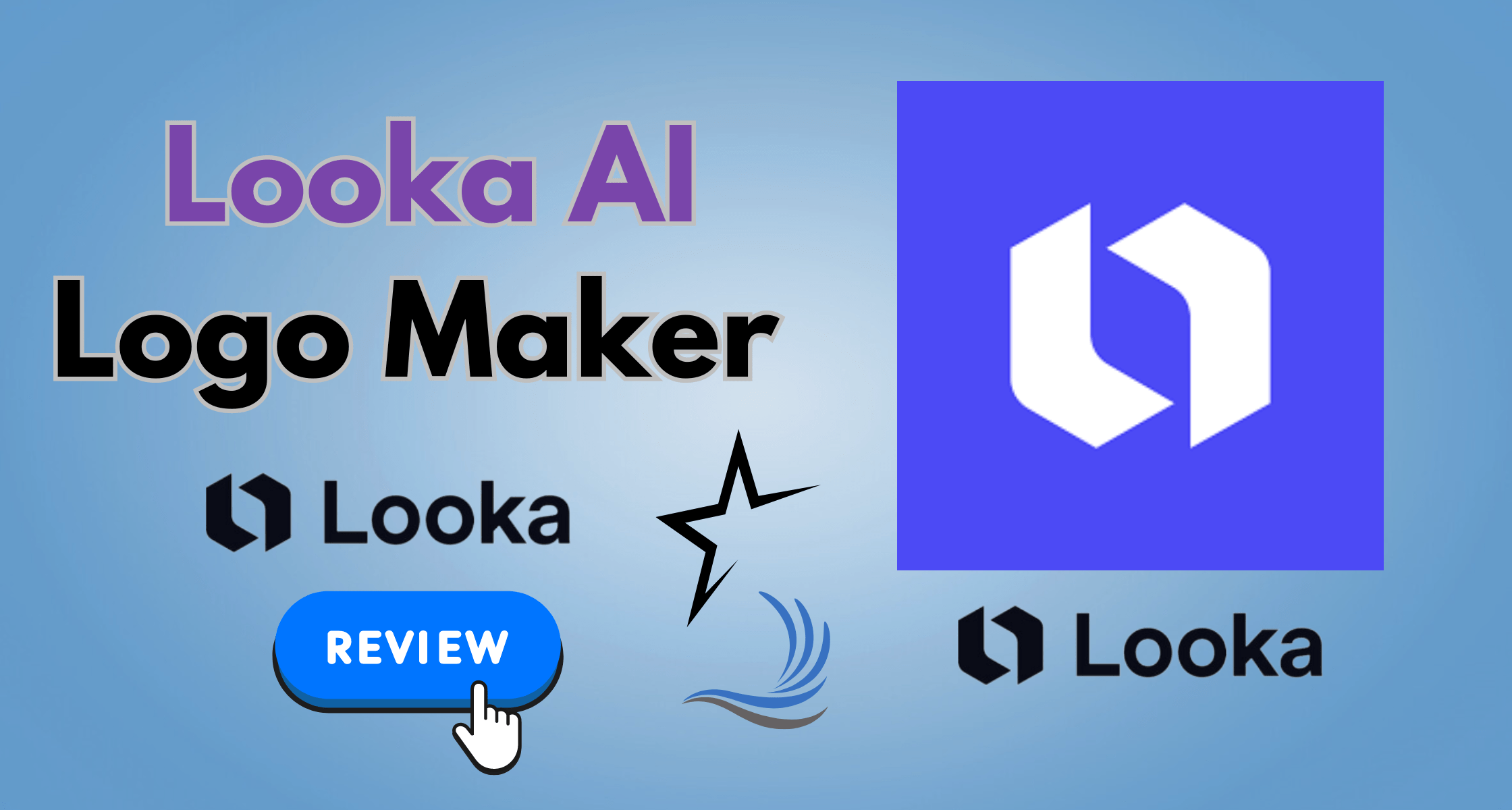



[…] rise of AI SEO tools coincides with the rise of AI recruiting tools, AI marketing tools, as well as issue-tracking software. These AI-powered solutions redefine digital strategies by combining intelligent keyword […]
[…] See also 13 Best Issue Tracking Software of 2023 ( Top Picks Ranked ) […]
[…] See also 13 Best Issue Tracking Software of 2023 ( Top Picks Ranked ) […]
[…] See also 13 Best Issue Tracking Software of 2023 ( Top Picks Ranked ) […]
[…] Best Issue-Tracking Software of 2023 (Top Picks Ranked) […]
[…] Best Issue-tracking Software of 2023 […]
[…] Best Issue-Tracking Software of 2023 […]
[…] seen the best AI software for photo editing, marketing, recruiting, issue-tracking, sales, and credit repair in recent articles. Let’s take a look at some of the best AI tools for […]
[…] seen the best AI software for video editing, issue-tracking, credit repair, students, business, and sales in recent articles. Let’s take a […]